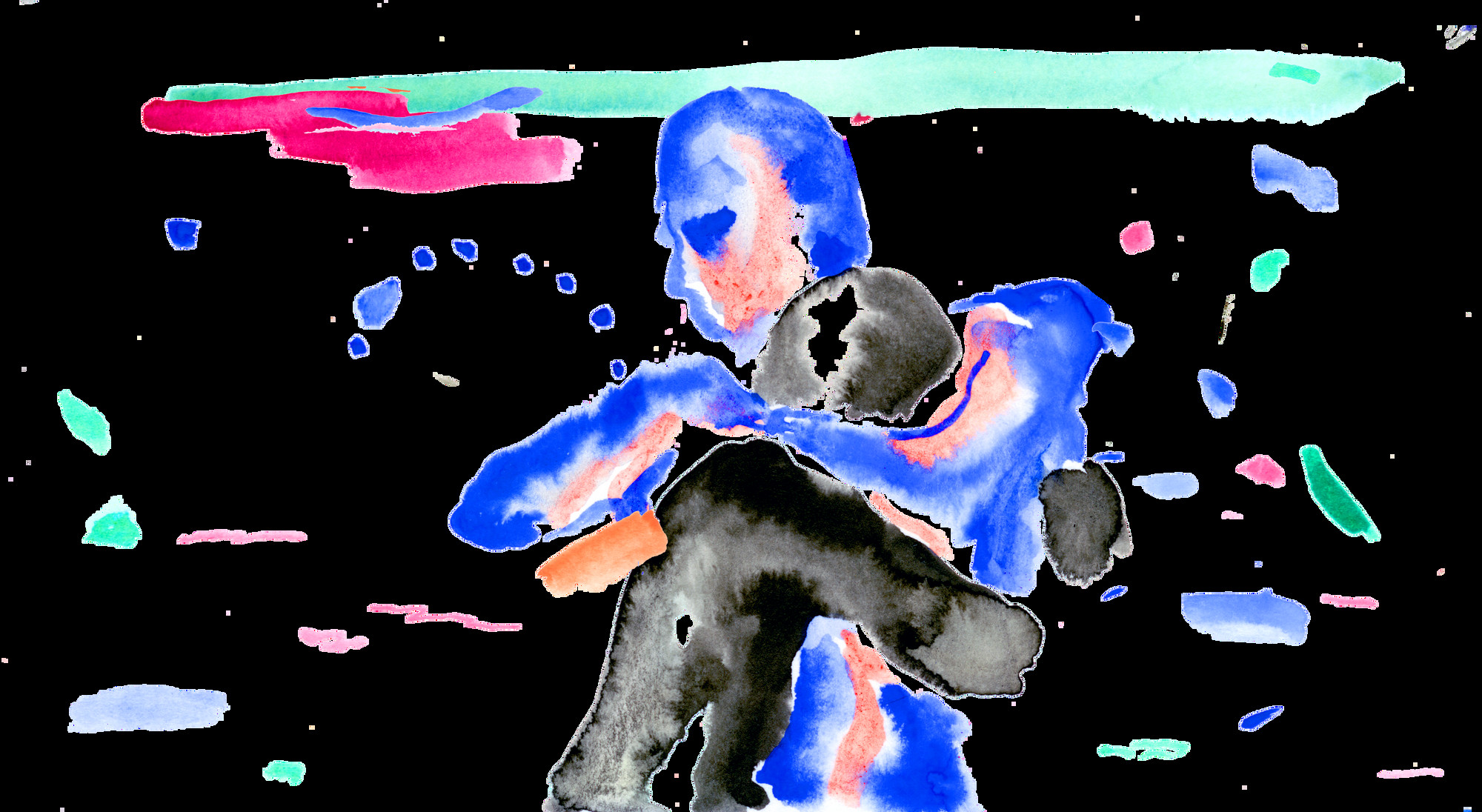Losing someone you love is an experience that reshapes your world. Two years ago, I faced this profound shift when my father passed away. He was 81, had lived a full life, and our relationship was rich with unspoken understanding and affection. There were no dramatic conflicts, just a deep, abiding connection. He was a man of Iowa prairies, born during the Depression, who lived a life spanning from Catholic priesthood to real estate, always teaching me the value of kindness in a world often prioritizing self-interest.
His last words, a gentle “Aw, that’s too bad, I’m sorry,” spoken to my mother on the eve of their anniversary, were characteristic of his thoughtful nature. As his body began to fail, we surrounded him with love and comfort. Music filled the room, Spotify playing Tex Ritter’s “Green Grow the Lilacs,” a nostalgic melody from his past. In his final moments, Sister Marie Kyle, a messenger from a dear friend, Sister Phyllis Anne, arrived to offer prayers of release. As Jim Reeves sang “Take my Hand, Precious Lord,” my hand clasped his, and his breathing softened, his body finally finding peace. At 5:20 PM, he was gone.
The immediate aftermath was a wave of tears, not at his bedside, but in the following year. Relief mingled with grief; his passing had been preceded by months of declining health. Yet, the absence of this constant connection left me feeling adrift. Something fundamental had vanished. I had lost someone deeply loved.
My journey through grief was varied and intense. I sought solace in travel, visiting cherished friends across continents. I made life changes – leaving a job that no longer resonated, moving cities to create space for mourning, and even taking selfies while crying, a raw attempt to understand the enormity of my loss.
This is my personal guide, born from experience, on navigating the difficult terrain of loss. There’s no single ‘right’ way to grieve When You Lose Someone You Love. However, understanding their absence, I discovered, became the path to truly appreciating the profound impact they had on my life.
 A thoughtful looking man in glasses stands outside in front of green foliage.
A thoughtful looking man in glasses stands outside in front of green foliage.
Step #1: Embrace Them Fully, Integrate Them Into Your Life
To truly lose someone, you must first have loved them deeply, allowed them to become an integral part of your being. My father was sentimental, endearingly uncool, genuinely kind. He lived in memories, loved connecting with people, and listened with profound attention, offering stories and advice in return. Growing up as his only child, I absorbed his essence, observing and learning from his every trait.
As I matured, I began to appreciate the qualities I once found ‘dorky’ or embarrassing. My teenage self’s need for a distinct identity faded, replaced by admiration for his genuine goodness. I no longer needed to define myself in opposition to him. I could finally embrace him fully, quirks and all, cherishing the unique person he was. This acceptance, this deep integration into each other’s lives, is the foundation of profound love and, consequently, profound grief when loss occurs.
 A digital illustration with the text "build a world." on a sky background with clouds and birds.
A digital illustration with the text "build a world." on a sky background with clouds and birds.
Step #2: Build Your World Around Them, Value Their Influence and Trust
The day before he died, a poignant memory surfaced for my father. “Remember snowball fights across the driveway?” he asked, his voice weak. Childhood winters in Wisconsin meant mountains of snow, perfect for building forts and epic snowball battles. These driveway skirmishes were a defining part of our winter fun.
He then confessed, “One time, I snuck around the house and surprised you from behind. I’m really sorry I did that.” This small moment, a childhood game, had stayed with him. It highlighted his deep sense of responsibility and the importance he placed on trust, even in playful moments. This trust, built over years, becomes the bedrock of your shared world. When you lose someone you love who has been central to building that world, the foundations themselves feel shaken.
 A digital banner with the text "header_option2.png" on a light blue and white background.
A digital banner with the text "header_option2.png" on a light blue and white background.
Step #3: Listen When They Speak of Their Own Mortality
Weeks before his passing, a quiet evening was punctuated by my father’s contemplation of death. “I wonder how it will happen,” he mused, watching a muted baseball game. He envisioned a peaceful, almost mundane end, “walking to the bathroom and just fall over and die on the floor there.”
My initial reaction was denial, “Don’t say that, not for a long time yet.” I grasped his hand, offering physical comfort, but missed the deeper opportunity. I regret not exploring his thoughts, his feelings about death. I should have asked what he imagined awaited him, what he felt about leaving. His openness was a gift, a chance to share his final reflections, but my own fear of facing the impending loss held me back. When someone you love speaks of their own dying, truly listening is a profound act of love and acceptance.
 A digital banner with the text "header_option1.png" on a light blue and white background.
A digital banner with the text "header_option1.png" on a light blue and white background.
Step #4: Simply Be Present
My life as a writer is often transient, but it afforded me the flexibility to return home during my father’s illness. I traveled between New York and Wisconsin, drawn back by the shifting tides of his health. I was there for his surgery, returned when his condition worsened, and flew back immediately when my mother called with the news, “His time is coming.”
We brought him home from hospice, but a few days later, his breathing grew labored, and he declared, “I am dying.” An ambulance ride followed, his last journey from home. Being present during those final weeks, those crucial moments, is a gift to both the dying and yourself. The simple act of being there, offering physical presence and emotional support, becomes a lasting memory when you lose someone you love.
 A digital illustration with the text "make stories together." on a purple and pink background.
A digital illustration with the text "make stories together." on a purple and pink background.
Step #5: Nourish Yourself – Eat
In the sterile hospital room, moments after his passing, family gathered, sharing memories. I sat near his body, yet he was undeniably gone. It’s hard to articulate, but the essence of who he was had departed. Looking at his physical form, I understood, with stark clarity, that the person I knew was no longer present.
Later, I wrote, “We left his body in the hospital room. He was already gone. We went to eat.” The meal that followed was surprisingly satisfying, a moment of shared relief amidst grief. Fried fish and pickled beets – simple comfort food. His pain, both physical and existential, was over. And in that moment, we needed to nourish ourselves, to acknowledge the continuation of life even in the face of profound loss. Taking care of your basic needs, like eating, is a crucial act of self-compassion when you are grieving the loss of someone you love.
 A close up portrait of the author Joel Kuennen looking directly at the camera.
A close up portrait of the author Joel Kuennen looking directly at the camera.
Step #6: Share Stories, Keep Their Memory Alive
The day after, our home filled with family, arms laden with casseroles, hearts full of memories. Cousins, aunts, uncles – thirty of us gathered, sharing stories, laughter, and tears. Tales of his youthful antics, like losing his front teeth in a baseball game and using his false teeth to playfully scare nieces and nephews, painted a vivid picture of a man beyond ‘Dad.’
My aunt’s remark, “You know, your father was a real feminist,” offered another facet. My mother, the primary breadwinner, and my father, a supportive stay-at-home parent, defied traditional gender roles. Through these shared stories, Denis, my father, emerged as a brother, uncle, cousin, friend – a multifaceted individual loved by many. These narratives, these shared memories, are vital in keeping the essence of someone alive when you lose someone you love.
 A digital illustration with the text "make stories together." on a purple and pink background.
A digital illustration with the text "make stories together." on a purple and pink background.
Step #7: Engage in Grief in Your Own Way
While not religious myself, I respect the rituals and community found in faith. My parents, raised Catholic, embraced the social justice aspects of their faith. My father, a former priest, instilled in me a love for nature, particularly our land in Iowa. Camping trips there, amidst cedar trees and limestone bluffs, created indelible memories. The scent of burning cedar always evokes his presence.
The land became a place of pilgrimage. The day after his premonition of death, I drove there, tears welling as the Mississippi River mirrored the flow of life and loss. It was on that drive that the reality of his impending death truly hit. I took a selfie, the first in a series documenting my mourning. That night, I carved a cedar cross, a tangible symbol of love and remembrance, which adorned his coffin. Grief manifests uniquely for everyone. Allow yourself to engage with it in ways that are meaningful and personal to you when you lose someone you love.
Step #8: Don’t Lose Them in Absence, Find Them in Memory
Felix Guattari, a postmodern theorist, wrote, “There is no lack in absence. Absence is a presence in me.” This resonated deeply in the months following my father’s death. His absence was a heavy weight, a constant awareness of the void he left. The simple, everyday moments – his hugs, his gentle scolding, his stories – were now echoes. The lack of future possibilities, the permanent absence, was a profound ache.
In these moments of intense grief, taking photos of myself crying became a way to document the “presence of absence.” I was seeking to capture his continued presence within my grief. The pain of loss, paradoxically, can become a testament to the enduring love and connection you shared. When you lose someone you love, their absence is undeniable, but their presence can live on in your memories, your actions, and the ways they have shaped who you are. Remember them, not as gone, but as a continued presence in your life.
About the Author
Writer
Joel Kuennen (b. 1984) is an art critic, curator, editor, and artist focusing on technology, identity, and society. Their work has appeared in Art in America, Frieze, and Brooklyn Rail. They founded Process Park, a nomadic experimental residency, in 2018 and were the Critic-in-Residence at Bemis Center for Contemporary Art in 2019.
